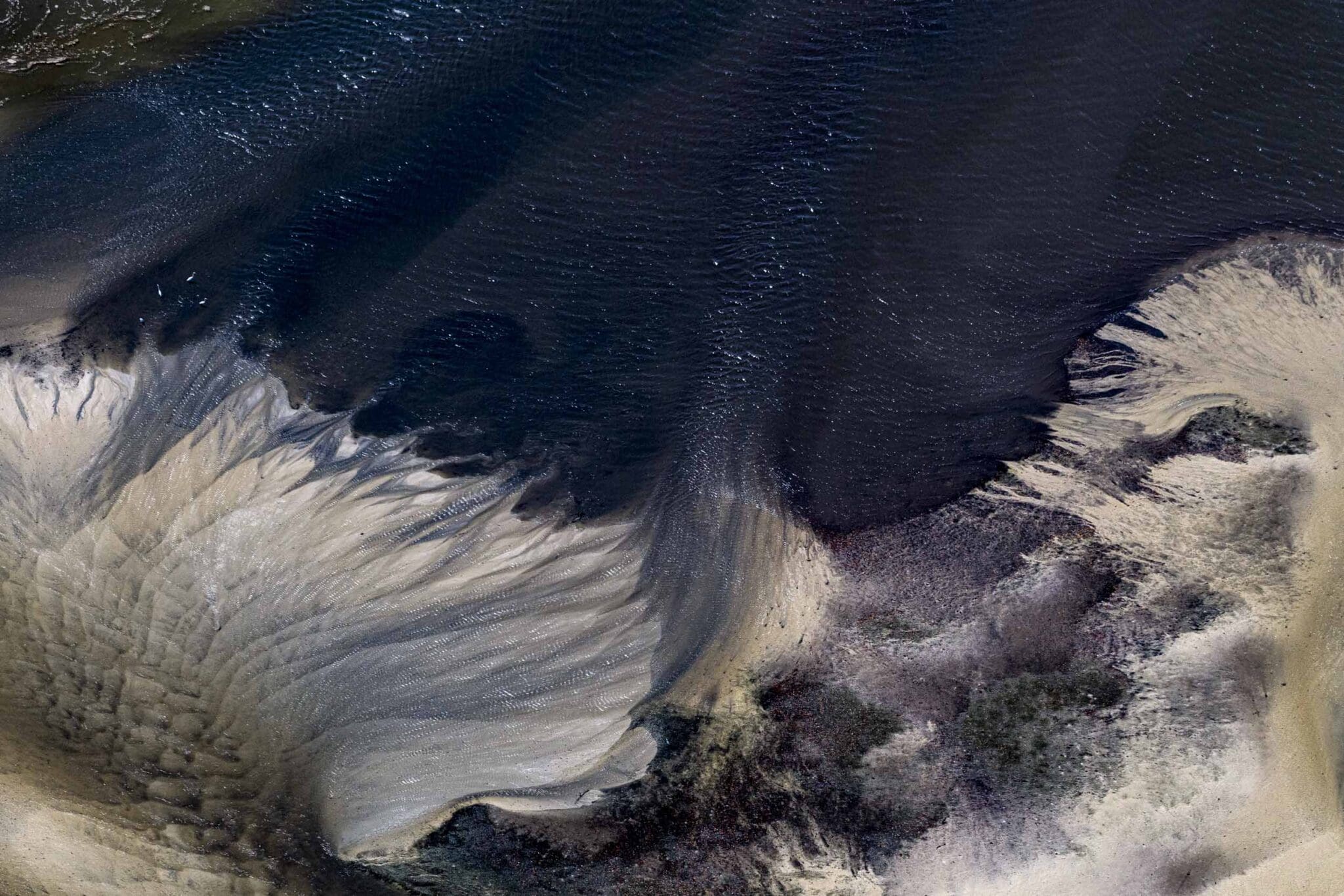
Syzygy: landscapes of the exact moment when the moon and the sun are aligned
For Uiler Costa-Santos, a Brazilian photographer, two moments marked his desire to be a photographer. Uiler grew up in a favela in Salvador da Bahia, Brazil. When he was about 15 years old, one of his aunts went to live in Switzerland and sent a postcard. It looked, Uiler says, as a dream image: a little house in the middle of nature, with white snow and a mountain. He could not believe that such a thing existed: the reality around him was very different. Something remained, the deep desire to experience such a landscape.
When he got a camera, took it on his honeymoon, and started taking many pictures. He had no intention of it becoming a job: the camera was and still is a tool to relate to the world, to question and understand his social experiences. Uiler says that he does not consider himself a creative photographer and that all his experiences start from a very attentive observation. Everything he photographs already exists.
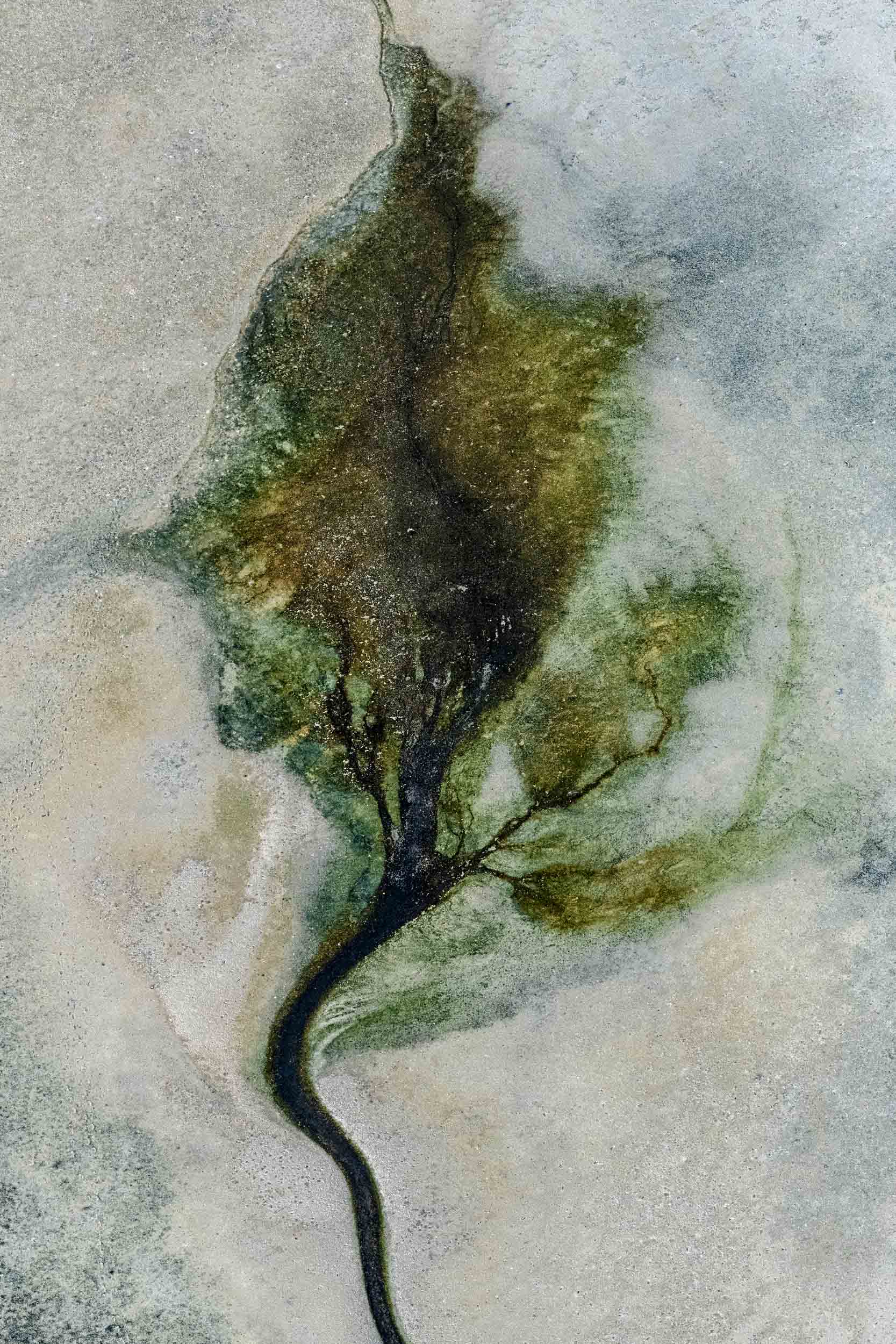
In 2017 he started the project Syzygy: the cosmology of low tide (Sizígia: a cosmologia da maré baixa). Twice a month, an astronomical event happens: the moon, the earth, and the sun align. It is known as syzygy. It is also the moment of the highest or lowest tide on the coast. The syzygy, explains the author, “are moments of connection in which the sea, the soil, and the rivers build new reliefs and geographies. They are moments in which the landscape is transformed, and a revelation occurs. During the syzygys, the landscape is transmuted, allowing us to perceive the everyday and its constant capacity for creation. I find the main visual material for my work in these formations of very low or very high tides. That is why syzygy is also an encounter”.
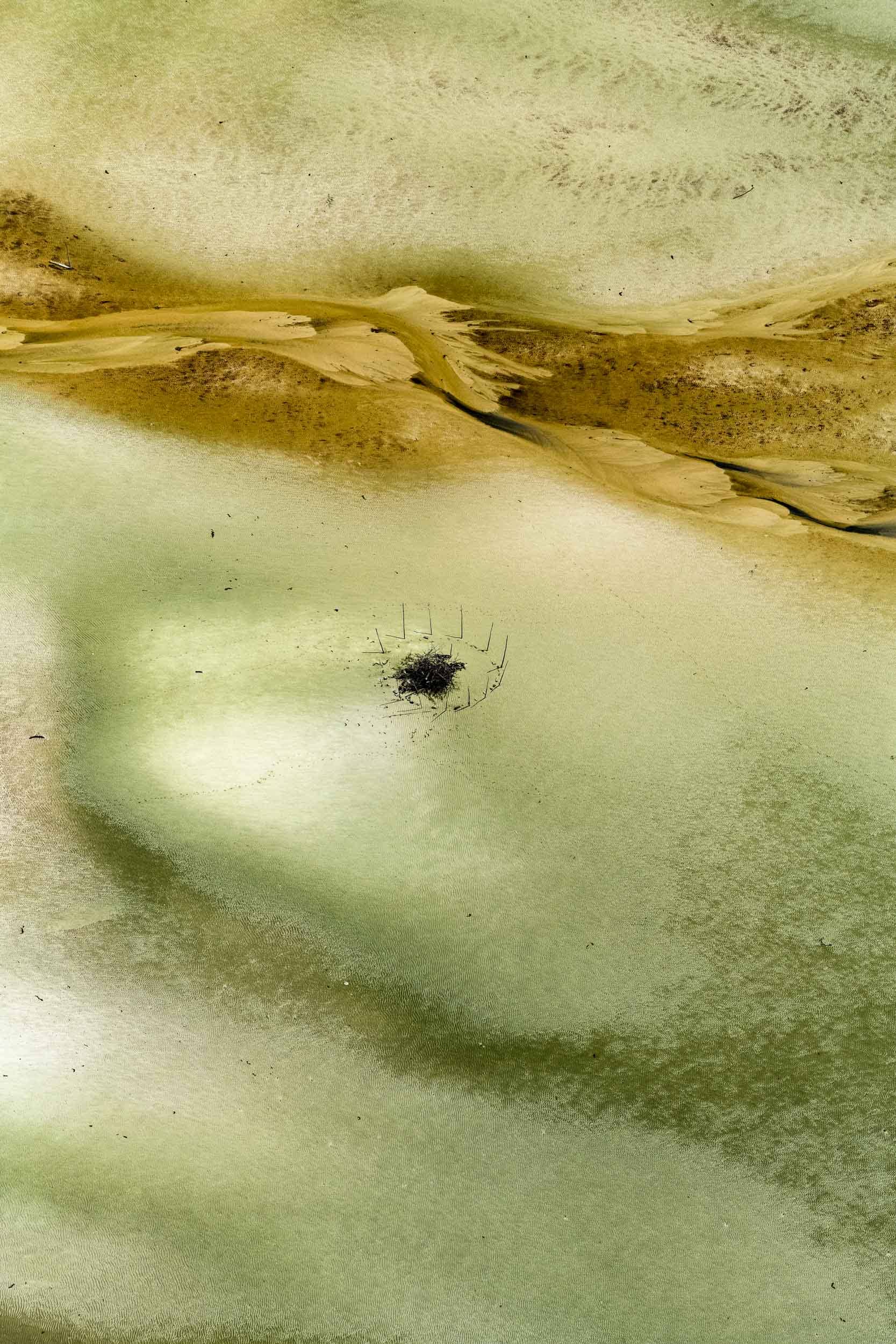
Uiler also creates a playlist for this interview.
How did you start this project?
The project was born in 2017. The full name is Syzygy: the cosmology of low tide and in it, I am studying my relationship with my territory. I have always been interested in landscapes since I saw that postcard. In my journey, I have sought to produce images that awaken the same feelings I felt at that moment.
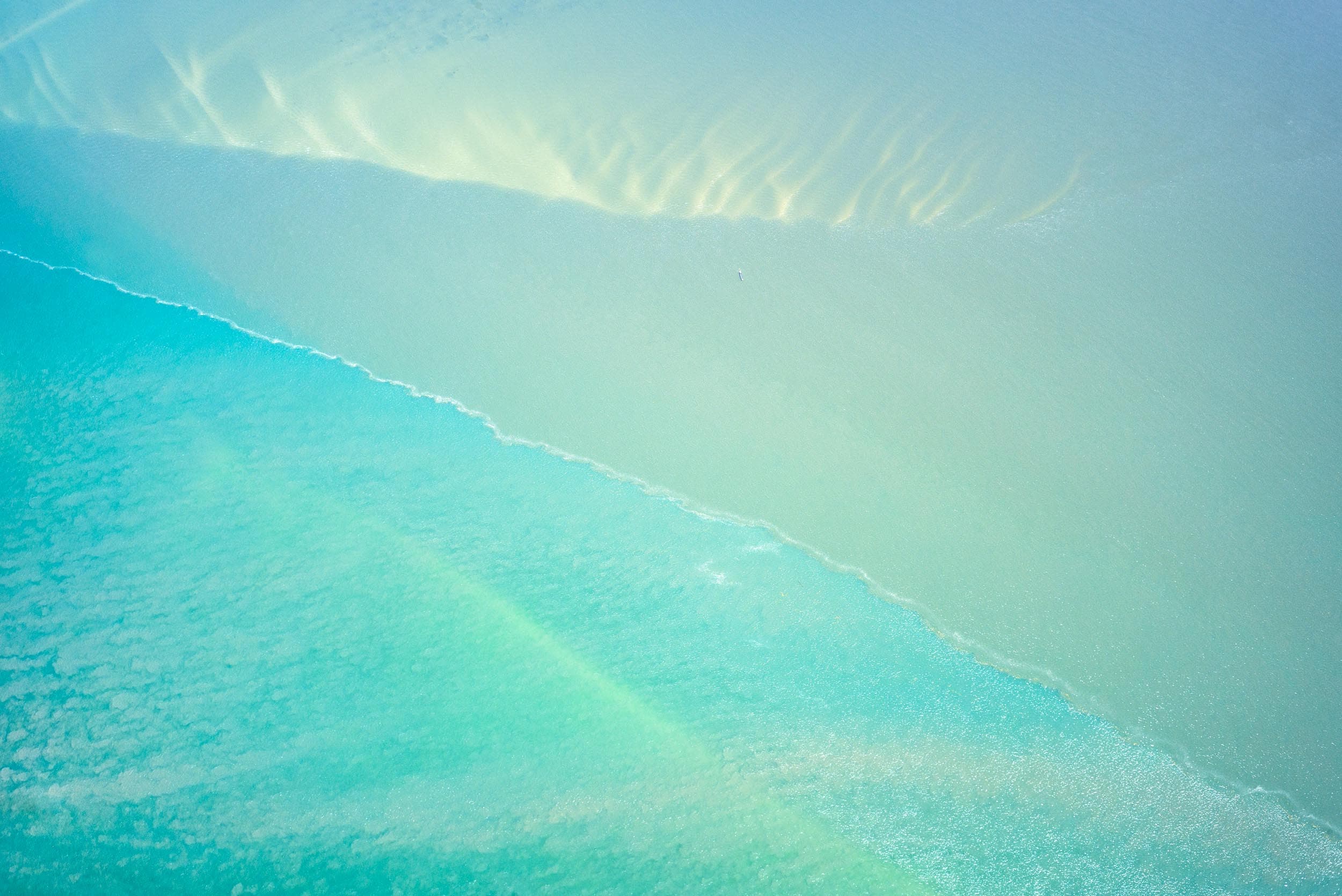
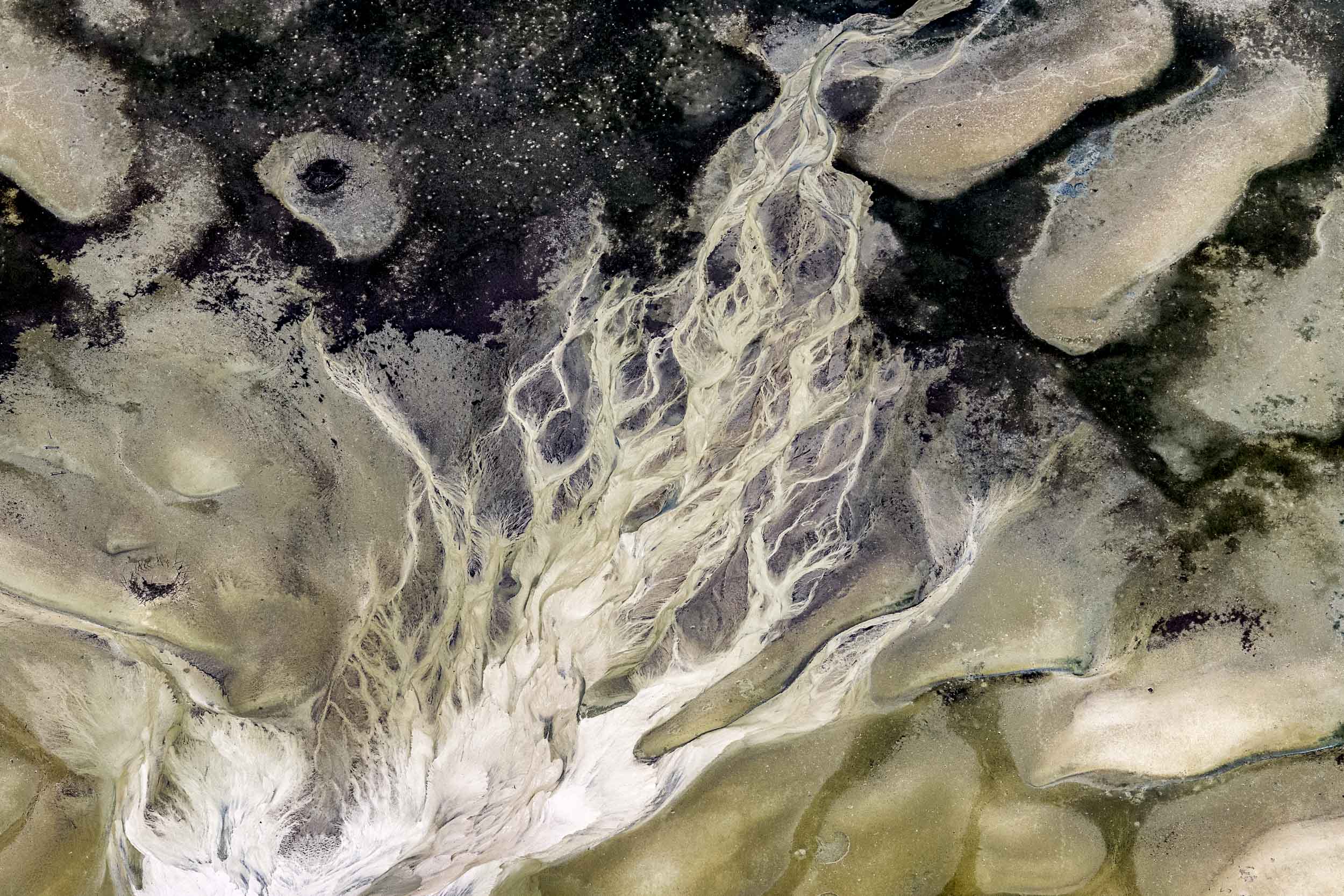
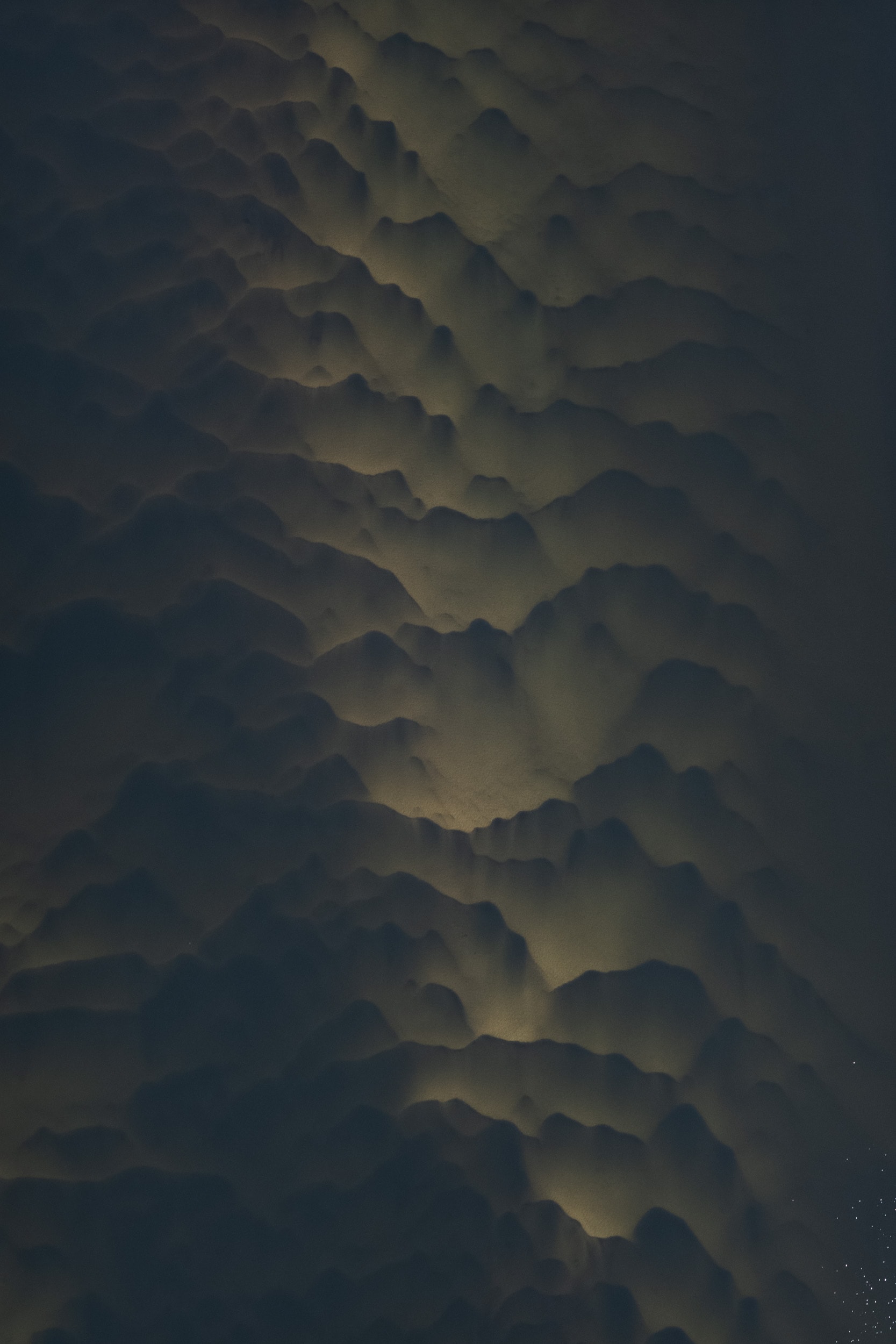
An image’s capacity is essential to invoke the imagination, which is a powerful tool. Imagination is something that neither the worst policies nor the worst situations can take away from a person; it is internal.
Syzygy comes from my desire to create new landscapes for a possible existence. I set out, then, to talk about that beautiful feeling awakened when we are in contact with nature. Capitalism has led us to think that we are something different from nature. Everything is interconnected, but we live anesthetized. There are things that we no longer feel because we are busy surviving.
I believe these images can reverse anesthesia and make people awaken their senses and their capacity to imagine new possibilities of existence in this territory.
In that sense, producing images that stress the differences and similarities between space and nature through the abstraction of the lived territory itself allows me to construct visual enigmas that, photographically, open up the real for a new reality. Although we do not entirely know the reality of the spaces I photograph, I believe that the images continue to open up possibilities for the imagination of new places.
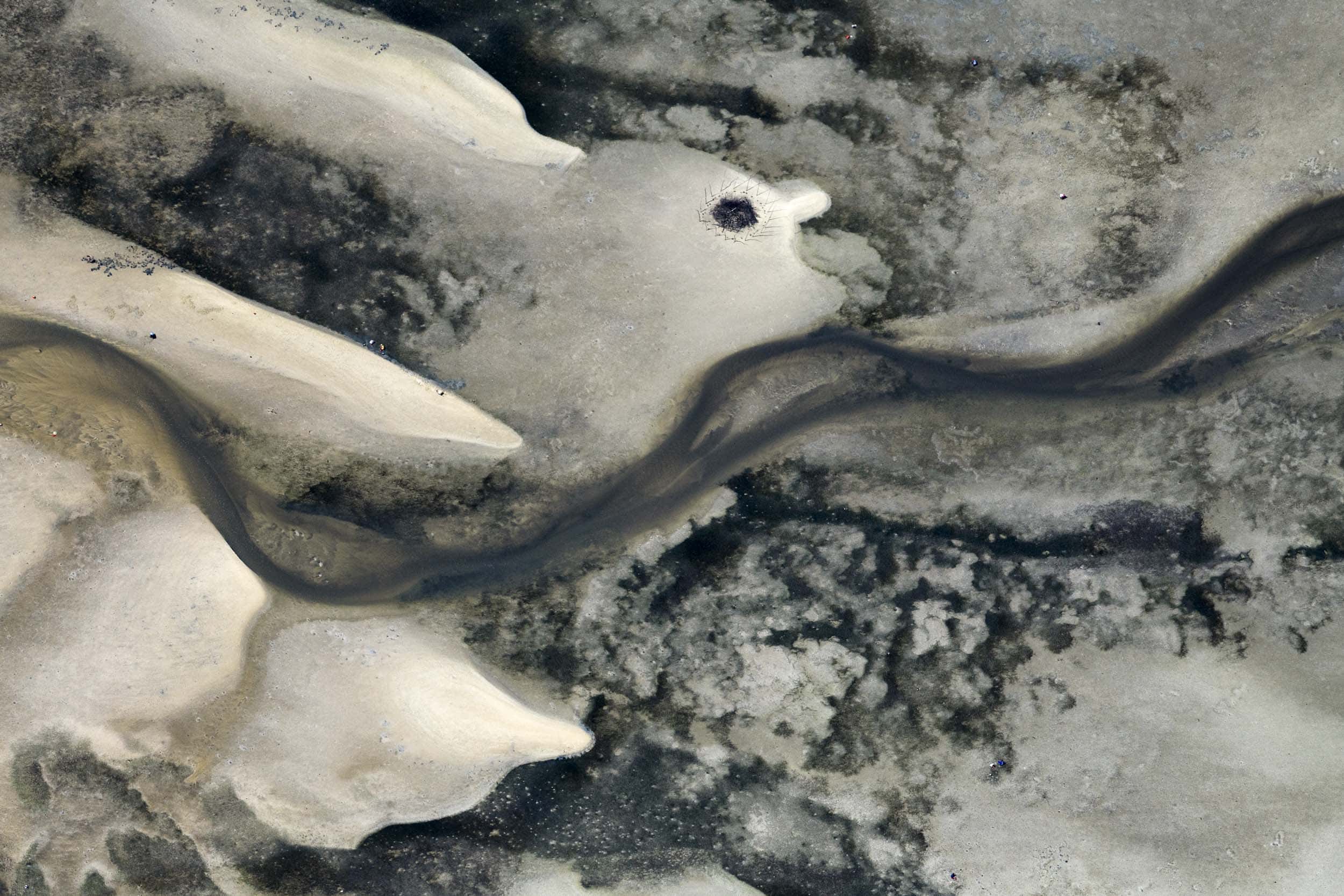
How do you make these images?
All photographers have a big challenge: everything has already been photographed and seen. How can I talk about something I felt about something I saw on two-dimensional support? How can I transmit that feeling to the photograph? With Syzygy I understood it wasn’t going to work at ground level, so I started to do some experiments. When I went up at a building scale, I realized that the silence and the perspective allowed me to see different things. But it wasn’t enough.
In 2015 I did a job with a perfect budget, and I tried something that had caught my attention a lot before aerial landscape photography. So I made the first flight, and it was like a revelation: at a specific altitude, neither too low nor too high, if you are very focused, you get to see other things. It’s like opening a window. And if you are very tuned in, you can see other landscapes. So that window became an enigma. That’s when I decided to create those visual enigmas that allow us to reflect on our existence in this space-time. And they will enable me to talk about our relationship with nature.
I take photos in overflights over the Todos os Santos Bay at a specific moment that happens twice a month, the syzygy, an astronomical phenomenon: the moment when the sun, the earth, and the moon align. When that happens, we have the maré grande, the month’s lowest or highest tide. I chose to take the photos when the tide was shallow; I realized that I could see more of the coastline that way. Intriguingly, just the attentive observation of nature at a specific time can lead to so many things.
It’s a slow process because syzygy occurs only twice a month, but also helicopter flights are costly.
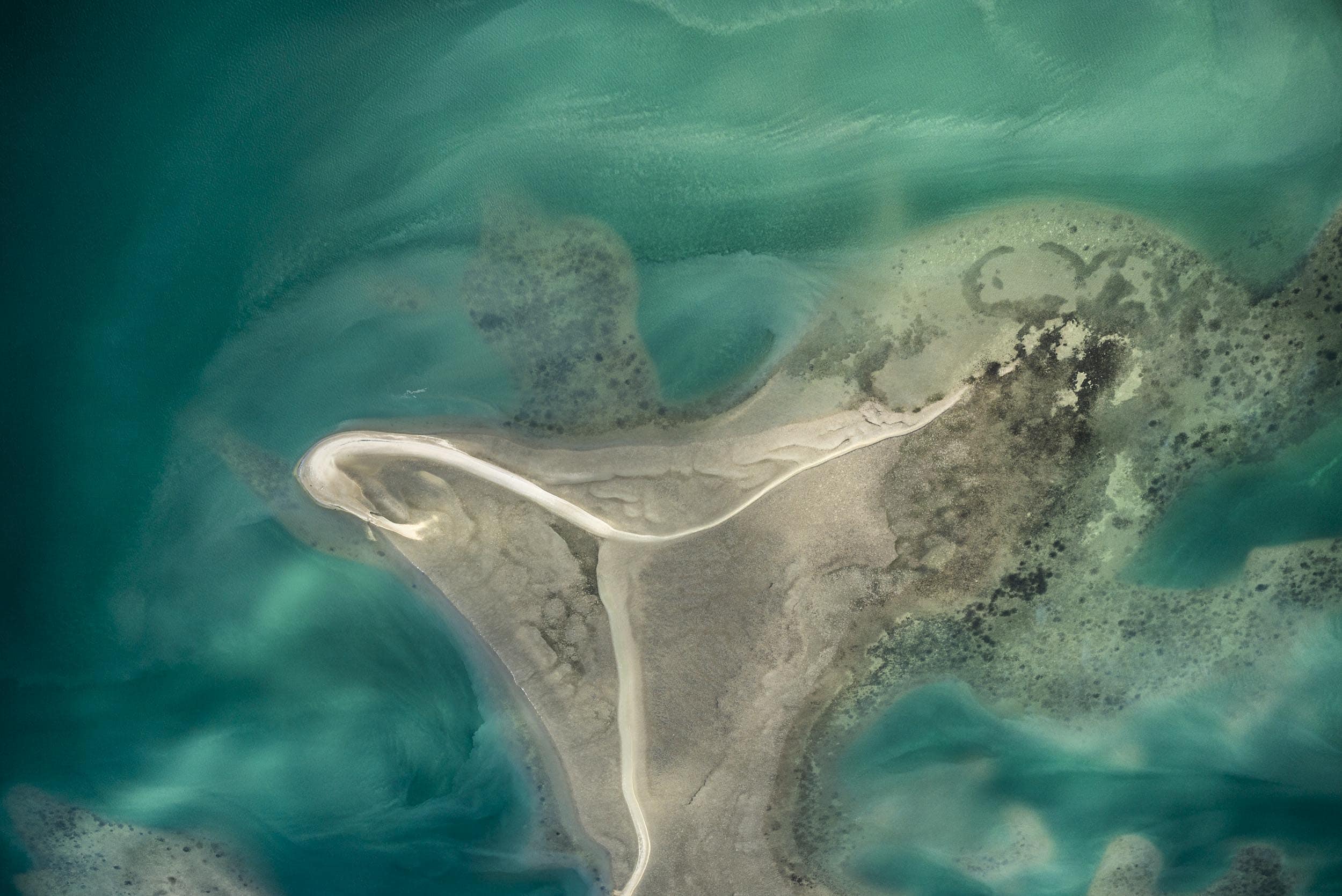
This idea of experiencing the landscape is fascinating. What is a landscape for you, and how do you experienced it?
I like the concept of landscape by the geographer Milton Santos: “everything we see that our vision reaches is landscape. It is formed by volumes, but also by colors, movements, smells, sounds”. The traditional way of illustrating the landscape, showing the horizon, does not work for me. My photos are landscapes that everyone experiences and interprets in different ways. I am interested in generating an enchantment through them, not that people recognize the place, but that they can activate their imagination.
Something happens with photography that might not happen if I were directly in the place because the world is full of distractions. I am interested in enchanting the person who sees the image and begins to ask questions. When you see the image, there are two aspects: the imaginary and the dream, and the other is to open the possibilities for a new reality.
I understood it was necessary to conceive photographs that returned more questions than answers in a world loaded with images. Developing the imagination by observing one’s territory allows new possibilities of living and feeling, recovering the experience of being in contact through the senses. Abstraction through visual enigmas plays an important role, especially for populations living in contexts of greater social, racial, and economic vulnerability, for whom the right to landscape is restricted.
It is not so common, even though we are in Latin America, for a photographer to talk about the need to solve practical life to be able to create.
Carrying out this project is quite complex, mainly in a country where reality is also tricky. From the place where I come from, it is improbable to be able to produce a work like this and make a living from photography. The challenges for an artist to live with dignity in Brazil are immense. It’s almost audacious, as my grandmother would say.
But I have artistic practice as a condition of life, and, for me, imagination has been a potent tool. We must try to preserve the imagination in children, the ungovernable capacity to imagine.
Currently, the Syzygy project has six visual chapters in development. Each of them seeks to extend situations experienced in the territory, such as the poetics of geographies, the impacts of contemporary life concerning traditional ways of conceiving space, and the contributions of embodied knowledge to the creation of new politics of imagination.


